3 Cordless 16-in. Chainsaws Reviewed
We tested 16-in. cordless chainsaws from DeWalt, Makita, and Milwaukee, and the best choice depends on whether light weight or total runtime is more important to you.
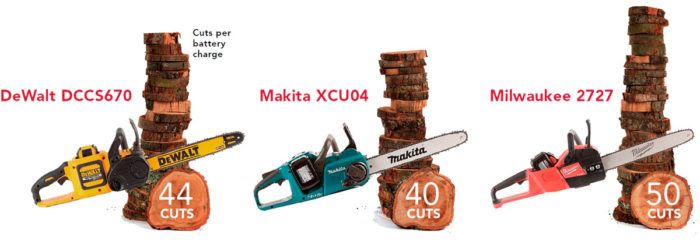
A recent severe storm downed three mature white oaks on my property, providing the perfect opportunity to boost my fitness and test 16-in. cordless chainsaws from DeWalt, Makita, and Milwaukee. When the saws were in my office, they elicited the most varied responses to a new tool that I’ve ever heard from my coworkers. Some likened them to toys. Others thought they were really cool.
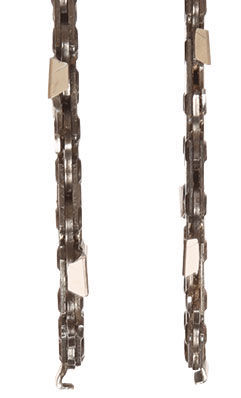
So why would you want a cordless chainsaw when gas models are less expensive and can run all day on only a few dollars’ worth of fuel? The reason: These saws are really handy—they go to work quickly and without fuss. They’re also quiet compared to a gas saw, you don’t need to mix and store two-cycle fuel, and—especially important to remodelers—you can use them indoors.
All of the saws have a 16-in. bar and use thin-kerf (0.043-ga.) chains with 56 links. The $15 to $20 chains are common enough that I was able to find replacements at my local box store and on Amazon. The chains stretch quickly, so check the tension on new chains often. Although they share the same chain and bar layout, all have different battery platforms. The Milwaukee uses a single 18v pack. The Makita uses two 18v batteries. And the DeWalt uses their 60v (nominal) FlexVolt battery.
In addition to the nearly 40 hours I spent limbing and bucking large branches from my fallen trees, I also did a runtime test on 6-in.- to 10-in.-diameter branches. I installed brand new chains and rotated through the three saws after every cut to ensure each got the same workout with regard to species and log diameter (see results below).
After using these saws for a few weeks, I’ve decided that all of them are fully functional for property maintenance and residential construction, and none of them is sufficiently better than the others to make it worth switching battery platforms. So, will a battery-powered chainsaw replace your gas saw? Not yet, because with constant use you can’t recharge the batteries fast enough; but they make a really handy (albeit expensive) second saw.
DeWalt DCCS670
Price: $199 (bare tool)
This tool was unfazed by 12-in.-dia. oak logs, but was in the middle of the pack on cuts-per-charge using a 9-amp/hr pack, the largest DeWalt offers. The number of cuts would be far less with the 3-amp/hr pack that comes with the kit version. Some online reviews claim the bar attachment is faulty. I didn’t have any trouble, but I did find the pack difficult to remove, and oil leaks were an issue.
Makita XCU04
Price: $300 (bare tool)
At 12 lb., this was the lightest and best balanced of the saws. It runs on a pair of 5-amp/hr batteries rather than one big high-amp/hr brick. I like the smaller packs because they’re more useful on other smaller tools from the same platform, like impact drivers and drills. This saw leaked the least oil, but I just couldn’t get used to its poorly placed safety button.
Milwaukee 2727
Price: $300 (bare tool)
Milwaukee’s monster 4-lb., 12-amp/hr battery pack helped their saw best the others in the runtime test, but it also makes the fully loaded saw 14 lb.— the heaviest of the group—and I definitely felt the effects by the end of my head-to-head testing. I like Milwaukee’s time-tested bar-attachment method, especially since the wrench stores on the bottom of the saw.
ALSO: Watch the Tool Tech Cordless Chainsaws video review
Photos: products, Patrick McCombe; log rounds, Rodney Diaz




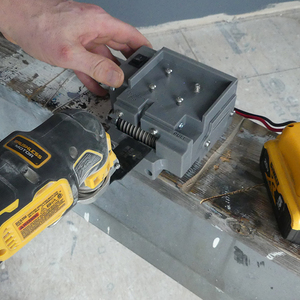





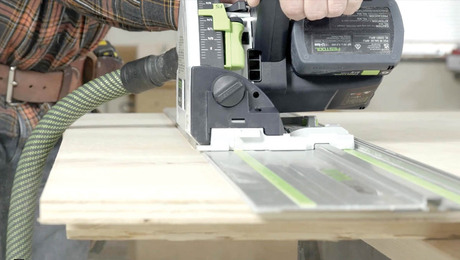
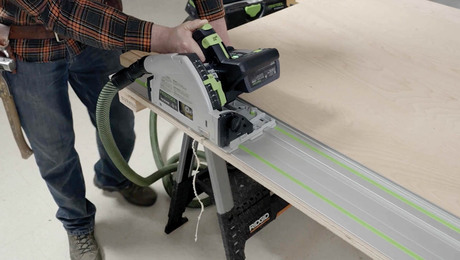




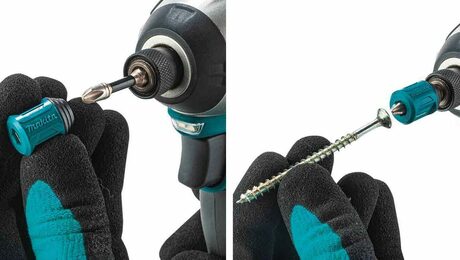










View Comments
These are the right fit if you want to take advantage of your battery platform and just use your chainsaw occasionally. But the best battery chainsaw overall is the EGO - according to other reviews.
These battery powered saws are pretty amazing. It is hard to overstate the benefit of no maintenance, quieter, no mixing fuel, and instant power.
You state in the DeWalt overview that you are "using a 9-amp/hr pack, the largest DeWalt offers. The number of cuts would be far less with the 3-amp/hr pack that comes with the kit version", that is not correct. The 9Ah battery you tested it with IS the battery that comes with the kit. It is a 9Ah battery when used on a 20v tool and technically a 3Ah battery when used on a Flexvolt 60v tool, so they are the same. (also they have since released a 12Ah/4Ah Flexvolt battery).
I would like to elaborate on your findings, where you compare the number of cuts each saw made with their respective battery packs. As tested it is not quite an apples to apples comparison, as the battery packs do not have the same energy potential, or you could say the same size "fuel tank".
DeWalt: 54v x 3Ah = 162 watt/hours
Makita: 18v x 2 x 5Ah = 180 watt/hours
Milwaukee 18v x 12Ah = 216 watt/hours
The Milwaukee has the largest "fuel tank" so of course it is going to get the most cuts. A better comparison would be to give them all the same 216 watt/hour rated battery packs (DeWalt's 4Ah Flexvolt, 2x Makita's 6Ah, and keep Milwaukee's 12Ah) OR list number of cuts per watt/hour for a better comparison of efficiency.
DeWalt: 0.271 cuts per watt/hour
Makita: 0.222 cuts per watt/hour
Milwaukee: 0.231 cuts per watt/hour
The Milwaukee and Makita are pretty close, but the DeWalt will make more cuts if the battery packs are all the same size. If they were all hypothetically using the above mentioned 216 watt/hour packs, the number of cuts would look something like this:
DeWalt: 58.5 cuts
Makita: 48 cuts
Milwaukee: 50 cuts
Also, for anyone interested I want to add a bit of information that was not listed, chain speed of the saws.
DeWalt: 50 ft/sec
Makita: 65 ft/sec
Milwaukee: 45 ft/sec
Similar to the speed settings on your drill, lower speed gearing tends to have more torque. With that said, I've found the Milwaukee to be the torque-iest of the three, with the Makita being the most likely to bog down when pushed or cutting through hard, wet wood.
Excellent comment BigRichard! If a person compares gas chainsaws they never compare number of cuts per tankful of gas! For a fair comparison each saw should be given exactly the same amount of gas, or in this case, watt-hours of energy. If one does this, one is comparing efficiencies of the motor drive train systems. But a single trial on number of cuts on a natural product like limbs with operator variation would not even be statistically valid. Since all the saw are brushless motors they should be pretty close to the same efficiency. Sure, the Makita doesn’t have gears and uses a high torque outer rotor design, so it should theoretically have the best efficiency for converting electricity to useful work. Maybe the Flexvolt battery is more efficient since it uses the bigger 20700's instead of the 18650's. But I doubt that any of this is meaningful. It’s just silly to compare number of “cuts.” at all. As BigRichard pointed out, that has to do the the “fuel tank,” not the saw, and with batteries, the Wh determines the tank size. Besides, unlike gas a battery swap out is quick and easy.
What one should be comparing are the things that matter to you. Keeping with a platform of batteries that you already have. The possibility of using the batteries for other things, etc. If you have to buy new size or type battery that adds to the cost and utility.
Weight is important to some, perhaps all people. Sure, you could make a big heavy saw that would make a hundred cuts, but would you want a saw as heavy as a 18 pound bowling ball? Milwaukee saw weighs 14.0 lbs with 216 Wh battery, Makita weighs 11 lbs with 216 Wh batteries.
Chain speed is important if you do any limbing as low chain speed causes the saw to catch on small limbs. That's nice that BigRichard had the chain speeds!
For those who actually do care about the "tank size" or how much work can be done with one full battery set:
Ryobi 40V (36V nom) 5Ah battery weighs 3.05 lbs (32) x (5) = 160 watt hours
Briggs & Stratton (Victa) 82Vmax 72V nom 5.7 lbs (72) x (4) = 288 watt hours
Husqvarna 36V (nom) 4.2 Ah battery weighs 3.21? lbs (36)x(4.2) = 151 watt hrs
Greenworks 72V nom (80 max) 4 Ah battery weighs 5.5 lbs (72)x(4) = 288 watt hrs
Greenworks 72V (80 max) 2 Ah battery weighs 2.8 lbs (72)x(2) = 144 watt hrs
Milwaukee 18V (nom) 12Ah battery weighs 3.7 lbs. (18)x(12) = 216 watt hrs
Makita takes two standard tool batteries of any amp hr rating. They all weigh nearly the same.
Two (2) Makita 18V (nom) 6 Ah batteries weigh 2.7 lbs. (2)x(6)x(18) = 216 watt hrs.
Makita also runs on 5, 4 and 3 Ah batteries with progressively lower run times with the same approximate weight. (2) x (5) x (18) = 180, (2) x (4) x (18) = 144, and (2) x (3) x (18) = 108
Echo 54V 2Ah weights 2.65 lbs (54) x (2) = 108 watt hrs
Echo 54V 4Ah weights 4.1 lbs (54) x (4) = 216 watt hrs
Dewalt 54V (nom, not max) 4Ah battery weighs 3.2 lbs (54)x(4) = 216 watt hrs
Still with 36V 4.9 Ah battery weighs 3.8lbs (36)x(4.2) = 178 watt hrs
Stihl with 36V 6.3 Ah (AP 300) weighs 3.8lbs (36)x(6.3) = 226 watt hrs
Redback 120V [108?]3Ah battery weighs 4.0 lbs (108)x(3) = 324 watt hrs
EGO 56V 5 Ah battery weighs 4.9 lbs (56) x (5) = 280 watt hrs
McCulloch 36V (nom) (36) x (4) = 144 watt hrs
Snapper SBA260V 2Ah is 54V (nom) 3.01 lbs (54) x (2) 108 watt hrs.
Snapper 4Ah 60V max 54V (nom) 4.00 lbs (54) x (4) = 216 watt hours.